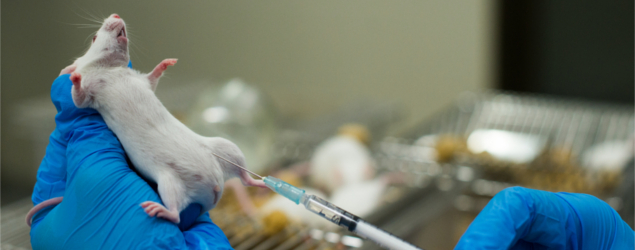How Cigarette Smoke Harms Animals – Hint: It’s not in the way you Think

The negative effects of smoking on cigarette users are well documented and acknowledged by health officials and general consumers. By now, most smokers also realize that secondhand smoke is a health threat to those around them. What many do not realize, however, is the negative impact cigarettes and the tobacco industry have on the animal population – a problem that reaches far beyond the effects of secondhand smoke from existing smokers.
Big Tobacco and Animal Testing
While the use of animal testing by tobacco companies was once more widely known, few realize that these tests are still taking place. Tobacco companies routinely use animals for experiments in order to determine what effect new products might have on humans. During the course of these studies, rats, dogs, monkeys and other creatures are forcefully exposed to tobacco smoke or tar for extended periods of time. They are often killed and then examined to determine what effects cigarettes have on their organs, lungs, and even unborn fetuses.
As reported by Peta, in the past decade, tobacco companies have used numerous inhumane study methods on a variety of species:
- Rabbits were covered in highly concentrated tar to determine what the effects might be. The result was various types of skin lesions and tumors covering the animals’ bodies.
- Rats and mice were placed into small canisters and forced to inhale tobacco smoke. The rats were exposed for six hours a day for 90 consecutive days. They were then killed and examined. In another experiment they were exposed to both diesel exhaust and tobacco smoke to observe the effects of each.
- Monkeys at the Oregon National Primate Research Center were fitted with tubes and subjected to a continuous dosage of nicotine. This was done during the monkeys’ final four months of pregnancy. After this time, the fetuses were surgically removed from their mothers and examined for the effects of nicotine exposure in the womb.
Unfortunately, these are but a few examples of the ways animals have been used by big tobacco. Through the decades, thousands of animals have been subjected to painful procedures, and inevitably, killed in the name of research.
The Effectiveness of Animal Testing
Some would argue that the use of animals in scientific research is a necessary evil – one of the many ways researchers can determine what impact substances have on human health. This viewpoint is misguided, and reflects a misunderstanding of the part animal testing has played in tobacco related diseases.

Animals are not human beings. According to the Physicians Committee for Responsible Medicine, their reactions to toxins, poisons, foods and chemicals are not always similar to reactions typical of human subjects. This has never been made clearer than during tobacco studies conducted during the 1960s. Tobacco lobbyists and manufacturers were up against mounting pressure from health advocates who were concerned about the possible health issues stemming from cigarette smoke. In response to this pressure, tobacco companies conducted a series of experiments in which animals were forced to smoke for a period of time. In every study, the findings suggested no link between cigarette smoke and lung cancer.
As everyone well knows, cigarette smoke does cause lung cancer in humans. Rather than further scientific knowledge on the dangers of smoking, the initial animal testing did the opposite. How many smokers died before the truth was revealed? How many animals died during the course of these flawed studies?
Even more troubling is that better, more effective studies using human tissue, have been developed. Animal testing, specifically by the tobacco industry, is not only inhumane and cruel to the animals involved – it’s bad science.
Solutions for Ending Animal Testing
While backlash against the tobacco industry, and more recently the Food and Drug Administration (FDA), by animal rights groups has had some effect on the use of animals for tobacco research, there is still more work to be done.
The most effective way to combat animal testing by tobacco companies is to stop using their products by either quitting smoking or trying vapes that do not use tobacco at all and are not tested on animals. Most vape juices and e-liquids have natural flavors without any connection to the nature destruction. Every purchase of a tobacco containing product puts more money in Big Tobacco’s pockets. While there are cigarette makers who are animal cruelty-free, their products are still harmful to human health and should be avoided.
Those who are concerned may also write to the FDA and other government officials to express their desire to see animal testing by the tobacco industry banned in the US, as it is in many other nations.
Additional Information
For more motivation to quit smoking once and for all, visit The Real Cost of Smoking.
Read more about the effects cigarette smoke has on the human body at The Effects of Smoking.


Paula Franklin
September 10, 2019 at 8:53 pmCan you tell me the current status of animal testing in the cigarette industry in the U.S. and abroad? I have a post on facebook that is going viral but some people are questioning the currentness of the information and also the photographs.